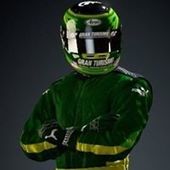On 4/7/2019 at 11:44 AM, bmarci said:Equal torques mean equal acceleration, but not equal speed. Somehow you can do tricks with torques to equalize the speed, but if you had access to the angular velocity and just override them...
Oh my goodness I totally forgot this ![]() . What I have right now is based on a faulty and naive assumption that angular velocity of 2 wheels are the same initially, and forgot the case when the diff unlocks and locks again. In this case the velocity of the two wheels will be different but will remain different if I apply equal torque.
. What I have right now is based on a faulty and naive assumption that angular velocity of 2 wheels are the same initially, and forgot the case when the diff unlocks and locks again. In this case the velocity of the two wheels will be different but will remain different if I apply equal torque.
I'm thinking of doing it differently like this with locked state: I'd find the average velocity of the 2 wheels. If one wheel has different velocity than the average, I'd apply a torque that would bring that wheel velocity to the average.
Or maybe, not having a state, but a continuous locking torque: I would still find the average, still apply torque to each wheel. But now the sum of locking torque of two wheels will be capped to the maximum locking torque. So if the maximum cap is not enough then there would still be an amount of torque keeping the wheel back, but only to an extent. Still this would not work, because in the case when the total required locking torque is larger than the maximum cap. In that case I don't know how the maximum cap would be distributed.
I do have access to angular velocity though, but I'm being very stubborn here because I don't want to have a mess of angular velocity and torque and lose control of them in the system. Really sorry about this ![]()
Thank you very much for replying. I'm getting the hang of things now.






